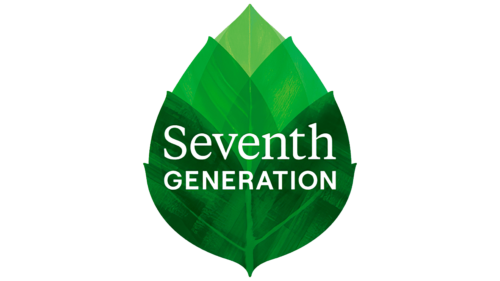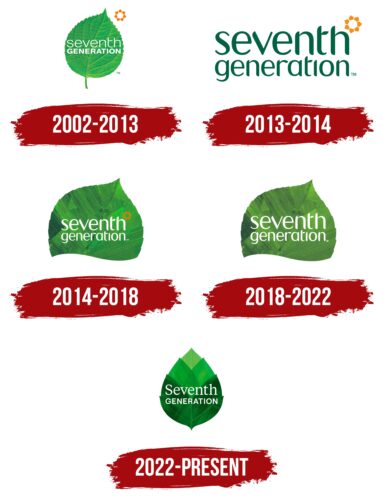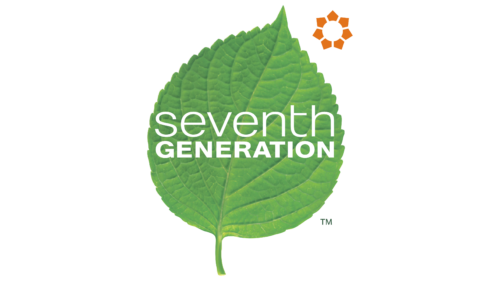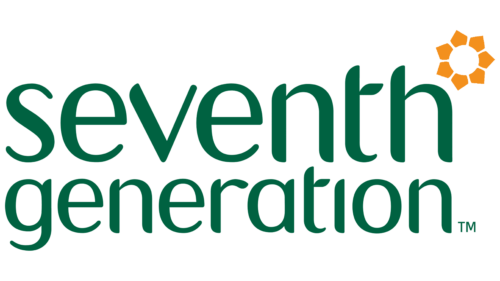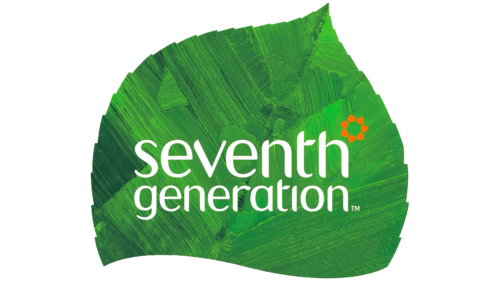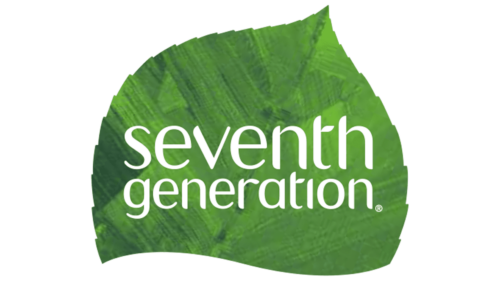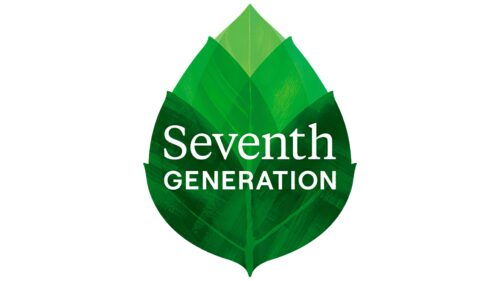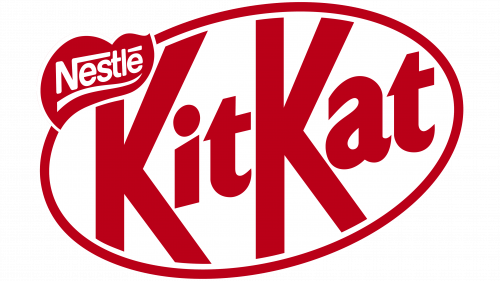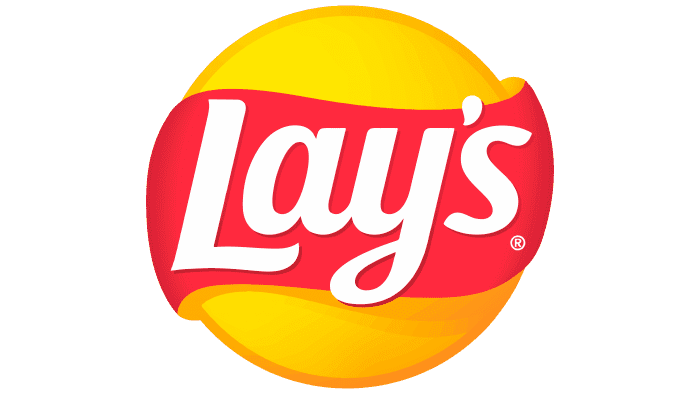The Seventh Generation logo embodies the brand’s philosophy of responsibility to future generations by advocating for a healthy planet. It highlights the company’s commitment to creating safe, effective products with minimal environmental impact. Seventh Generation focuses on using renewable resources, ethical production practices, and maintaining transparency in its processes, reflecting a deep dedication to sustainability and stewardship.
Seventh Generation: Brand overview
In 1988, Jeffrey Hollender and Alan Newman founded Seventh Generation in Burlington, Vermont, inspired by a commitment to future generations. The company, named after a Native American belief in sustainability, began selling eco-friendly products through catalogs.
Throughout the 1990s, Seventh Generation expanded its product line to include cleaners, laundry items, and care products for babies and women, gaining recognition for its dedication to the environment. By the late 1990s, with the support of external investments, the brand refreshed its packaging and marketing to reflect its mission and values more accurately.
The period from 2000 to the 2010s saw a surge in consumer interest in natural and eco-friendly products. Seventh Generation responded by extending its distribution to major retailers such as Target and Whole Foods Market. This era also emphasized the brand’s advocacy, launching campaigns to inform the public about environmental and health issues.
Innovation continued into the 2010s, introducing new eco-friendly formulas and expanding into new product categories. The aim to foster a healthier, more sustainable world remained steadfast.
2016 marked a significant event when Unilever acquired Seventh Generation for approximately $700 million. This acquisition allowed Seventh Generation to access Unilever’s resources and expertise, accelerating its mission while adhering to its core principles.
Seventh Generation is recognized as a leading brand in eco-conscious consumer goods, maintaining a strong global presence and setting standards for clean ingredients, responsible sourcing, and environmental protection.
The Seventh Generation’s journey illustrates the impact of visionary leadership, a persistent commitment to sustainability, and the development of a mission-driven brand. Seventh Generation has built a prosperous business and has become a significant voice in the sustainability movement by capitalizing on the growing demand for green products.
Meaning and History
What is Seventh Generation?
Seventh Generation is an American company that produces eco-friendly household cleaning products, laundry detergents, and personal care items. Their range includes everything from paper towels and toilet paper to baby diapers and cleaning supplies, all manufactured with minimal environmental impact.
2002 – 2013
Seventh Generation started in 2002 and grew significantly until 2013, focusing on eco-friendly products and strong corporate values reflected in its name and logo design. The logo features a green linden leaf in the center, chosen for its healing qualities, representing the company’s commitment to human health and the environment. This leaf symbolizes the use of safe, natural ingredients in their products.
Next to the leaf, the logo includes an image of a sun with seven rays or a flower with seven petals. Each ray or petal represents the company’s core values: social and economic justice, environmental responsibility, health care, compassion for the world, and business transparency. These values guide the company’s mission of sustainable development and maintaining harmony with nature.
The company name appears in white across the center of the leaf, linking the brand to purity and eco-friendliness while focusing on product hygiene and safety. The name “Seventh Generation” comes from the Iroquois principle that decisions should consider their impact on seven future generations. This idea highlights the importance of responsibly using natural resources to ensure their availability for the future, emphasizing a deep connection across generations and the cyclical nature of life and the environment.
2013 – 2014
In 2013, the company made its visual identity simpler and more recognizable by introducing a new logo. The logo features a vibrant green background for nature, health, and ecological responsibility—key brand values. The logo includes leaf shapes that make the text resemble a living plant, tying it closely to the company’s nature-focused products. These products are made to work with natural cycles and do not harm the environment or use up resources excessively.
The brand also uses eco-friendly packaging. All the packaging materials are biodegradable and go back to the earth without causing harm. They even help the growth of flowers and grass, showing that industry and nature can work well together.
A seven-petal flower symbol in the logo’s top right corner reminds everyone of the “law of seven generations.” This idea guides the company’s decisions, focusing on how actions today affect seven future generations. This stresses the company’s dedication to sustainable growth and environmental care.
2014 – 2018
In 2014, the company updated its logo by adding a stylized leaf, reflecting its focus on the environment and natural values. The new leaf design uses artistic paintbrush strokes to create a dynamic and lively image. These strokes represent the company’s products, such as napkins and toilet paper, made with environmental and sustainable practices.
The leaf in the logo is white, making the company name easy to recognize and underscoring the brand’s commitment to purity and eco-friendliness. The logo features a seven-petaled flower symbol beside the company name. This symbol represents the company’s dedication to sustainability and its policy of considering the impact on future generations. This approach highlights the company’s ongoing commitment to environmental preservation.
2018 – 2022
In 2016, Seventh Generation changed ownership, and in 2017, it saw new leadership. These changes led to a major refresh of the company’s corporate image, including redesigning its logo. This redesign marked a new stage for the brand, focusing on innovation while upholding its commitment to sustainability and environmental responsibility.
The logo’s shade of green was changed to a new hue resembling sunlight, making the logo look fresher and adding a sense of vitality. This brighter green, symbolizing the sun’s energy, aligns with the company’s reputation as one of the world’s top fifty most sustainable companies. This color change represents the company’s growth goals and adherence to natural principles.
The flower image was also removed from the logo, which now has a simpler and more modern design. This change focuses more on the brand’s name and core mission, continuing its commitment to ecological principles and sustainable growth.
2022 – today
The latest version of the movement’s branding features a new logo that represents its mission and values. The logo shows an unfolding flower or bud made from leaves, symbolizing continuous growth and protecting all life. It aims to express a desire for harmony with nature and support life in all its forms.
The logo has seven leaves, each representing the company’s key values, including environmental responsibility, sustainable development, social equality, and transparency in business. These seven leaves also represent the seven generations the brand hopes to impact, aiming to foster a healthy and fair environment for them.
The brand views its work as contributing to the future, helping ensure that the next seven generations can flourish. This commitment is likened to young, healthy green leaves, emphasizing the importance of sustainable natural resource use and environmental protection to allow each new generation to thrive in a world where nature prospers.
Font and Colors
The logo uses a serif typeface to emphasize the brand’s sophistication and traditional elegance. Serif fonts, known for their decorative details, lend a sense of prestige and timelessness to the logo, appealing to a discerning audience and highlighting the brand’s dedication to quality.
The logo’s color scheme features dark and bright green hues to illustrate the leaves, adding depth and a dynamic appearance. These shades represent growth, vitality, and nature, aligning with health and wellness themes. The lightest green at the center of the leaf adds a three-dimensional look, making the logo feel vibrant and organic.
The brand name is presented in glossy white, creating a sharp contrast against the green backdrop. This makes the name stand out clearly, enhancing its visibility and impact. The combination of white text on a green background ensures the logo catches the eye in a crowded marketplace.
The design elements combine elegantly to present a luxurious and reliable brand, leaving a strong impression on consumers.
FAQ
Why is the Seventh Generation called that?
Seventh Generation’s name is derived from an Iroquois principle that values sustainability and environmental care. This principle encourages people to think about how their actions today will affect people living seven generations in the future. The company is built around this idea, aiming to make products that are good for people today without harming the prospects of future generations.
This commitment to the future is at the core of the Seventh Generation’s work. Every product they create and every decision is made to reduce environmental damage and improve the world. Their name is a way of showing what they stand for and promising customers that they’re mindful of their product’s impact on the earth.
Who makes Seventh Generation products?
Seventh Generation Inc., a part of Unilever since 2016, makes Seventh Generation products. They focus on eco-friendly items for the home and personal use, including laundry detergent, dish soap, baby diapers, and more. In 2015, they made $200 million and had 170 workers, showing they play a big role in the market for green goods. Unilever, known worldwide, helps them grow faster and stick to their goal of making safe, low-impact products.
Even with Unilever in charge, Seventh Generation keeps running its way, sticking to its original mission. They prefer plant-based ingredients and recycled materials, aiming to lead by example in how businesses can operate sustainably.
Is Seventh Generation environmentally friendly?
Seventh Generation is known for being environmentally friendly, with products ranging from laundry detergent to facial tissue and diapers. The brand is recognized for its commitment to sustainability and using eco-friendly ingredients. Their Free & Clear laundry detergent is a great example, praised for its mainly plant-based ingredients and strong stain-removing power. Seventh Generation focuses on reducing their products’ environmental impact while ensuring they work well. This approach makes their products a top choice for people who want to buy things that are good for the planet and effective at the same time.
Who is the CEO of Seventh Generation?
Alison Whritenour is the CEO of Seventh Generation, founded in 2012 and took over in July 2021. The company makes eco-friendly products such as cleaners, paper goods, and personal care items. Alison joined the company in 2012, showing her dedication to making sustainable and ethical products.
Her leadership reflects her belief in doing good through business. Alison wants the Seventh Generation to have a positive effect on the environment. Her work history shows she’s always cared about sustainability. Even before becoming CEO, she worked in different roles at Seventh Generation, learning much about the business.
Alison’s career started at Colgate-Palmolive. There, she learned how traditional businesses operate but always wanted to make them more sustainable. Her switch to the Seventh Generation was driven by her wish to focus more on sustainability and ethics. This move began her dedicated work toward better environmental practices.
